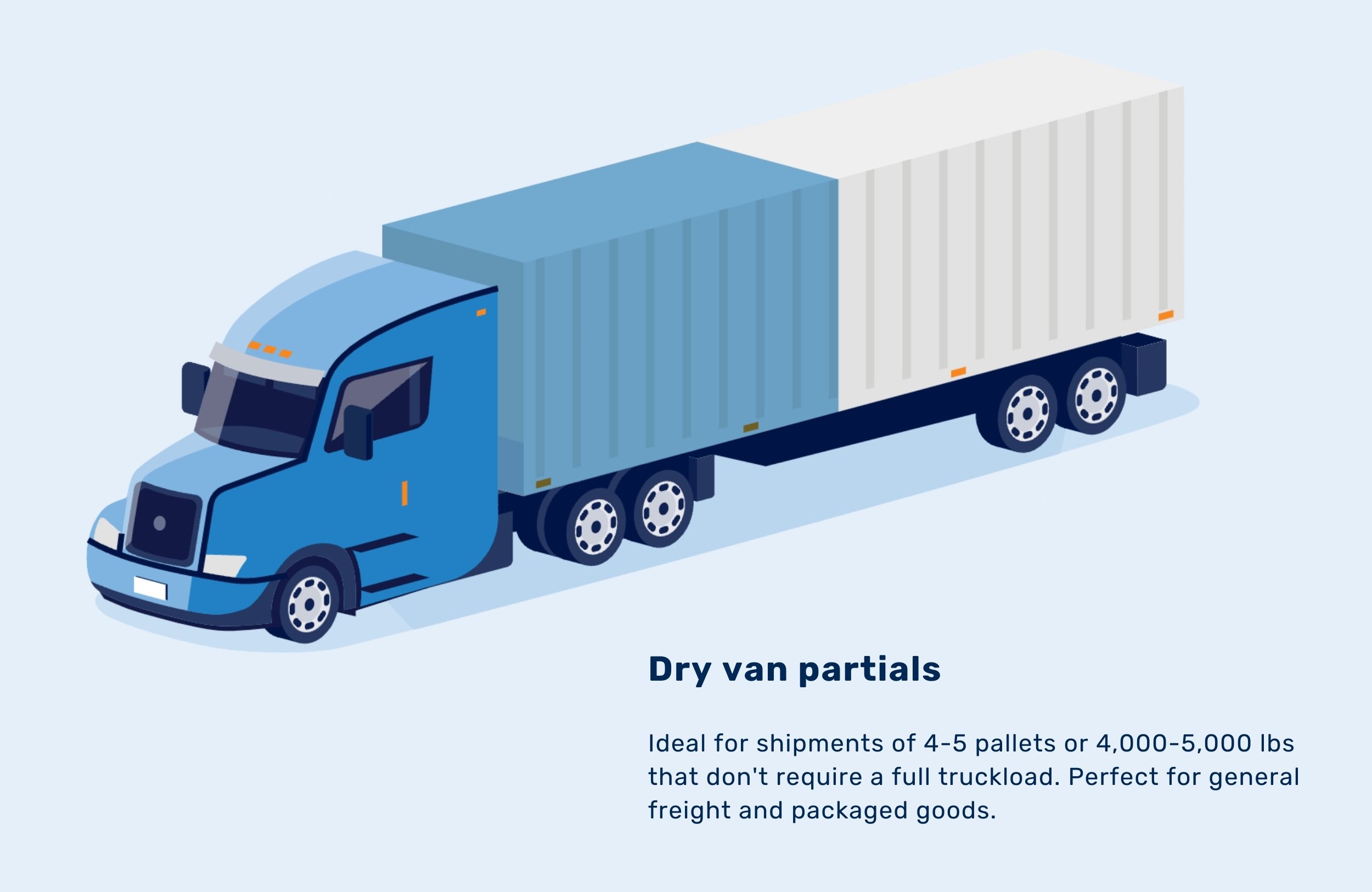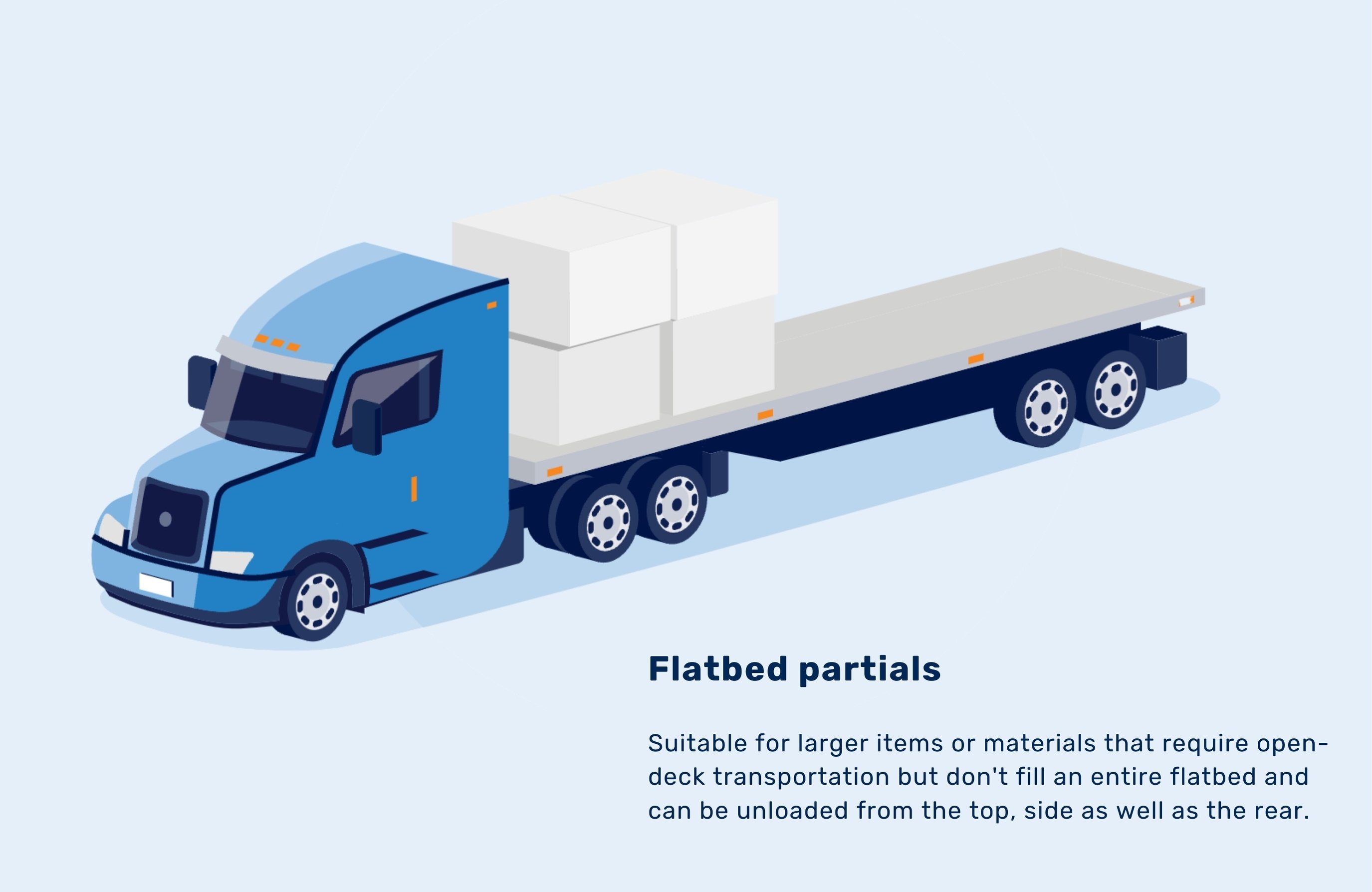A brief introduction
As a shipper, you've probably encountered this scenario: You need to move freight that's too big for LTL but doesn't require a full truckload. You're in partial truckload territory, and getting an accurate quote requires providing the right information to your logistics partner.
After 15+ years in this industry and handling thousands of partial shipments, I've seen firsthand how providing incomplete information leads to pricing surprises, service disappointments, and frustration on both sides. The good news? With the right preparation, you can get accurate partial load quotes that save you money while ensuring your freight moves efficiently.
Let's break down exactly what information logistics companies need to provide you with an accurate partial truckload quote.
First things first: what makes partial shipments different?
Before diving into the specifics, it's worth understanding why partial shipments require information different from that of full truckloads or traditional LTL.
With partial truckload shipping, we want to combine your shipment with others to maximize trailer space and efficiency. This consolidation process requires more detailed information about your freight than a dedicated truckload would. At the same time, partial shipments typically bypass the traditional hub-and-spoke system used by LTL carriers, reducing handling and potential for damage.
This specialized service sits in a sweet spot that can offer significant advantages for the right shipments, typically those taking up 4-12 linear feet of trailer space or weighing between 5,000 and 25,000 pounds.
|
This specialized service sits in a sweet spot that can offer significant advantages for the right shipments, typically those taking up 4-12 linear feet of trailer space or weighing between 5,000 and 25,000 pounds.
|


Essential information for accurate partial truckload quotes
Let's run through exactly what a logistics partner needs to quote you on a partial truckload shipment.
1. Detailed freight dimensions
When it comes to partial shipments, precise dimensions are absolutely critical. Unlike a full truckload where you're paying for the entire trailer regardless of how full it is, partial shipments are priced based on how much space they occupy.
What to provide:
- Number of pallets or handling units
- Exact dimensions of each unit (length, width, height)
- Total linear feet required in the trailer
- Whether items can be stacked
Why it matters: When I'm sourcing a carrier for your partial shipment, I need to know exactly how much space your freight will take up so I can accurately determine how it will fit with other shipments. Being off by even a foot can significantly impact pricing and capacity planning.
|
💡 Pro tip: If your freight has unusual dimensions or shapes, provide photos. Visual reference helps us plan consolidation more effectively.
|
2. Accurate Weight Information
Weight impacts not only pricing but also legal compliance with transportation regulations.
What to provide:
- Total weight of the shipment
- Weight per pallet or handling unit
- Whether weight is evenly distributed
Why it matters: Trucks have legal weight limits for both gross weight and per-axle weight. If your partial shipment is particularly dense, it might limit what other freight can be consolidated with it, affecting pricing. Additionally, carriers with lighter-weight equipment (such as hot shots) might be options for lighter partials, potentially saving you money.
Real example: Last month, I had a customer shipping industrial equipment that was unexpectedly 2,000 pounds heavier than initially reported. This threw off our weight calculations for the entire consolidated load, requiring us to find a different carrier and resulting in a higher cost than originally quoted.
3. Origin and Destination Details
Full address information is essential, but for partial shipments, we need even more specifics about the pickup and delivery locations.
What to provide:
- Complete addresses with zip codes
- Facility type (distribution center, manufacturing plant, construction site, etc.)
- Loading dock availability
- Any facility restrictions (appointment requirements, operating hours, etc.)
- Contact information for both origin and destination
Why it matters: Partial shipments often involve multiple pickups and deliveries in sequence. The order of these stops can significantly impact transit times and pricing. Additionally, knowing facility limitations helps us plan appropriately – if your shipment is going to a location without a dock, for example, we need to ensure the carrier has the right equipment.
4. Timing requirements
The flexibility (or lack thereof) in your shipping timeline significantly impacts partial load pricing.
What to provide:
- Earliest pickup date/time
- Latest delivery date/time
- How flexible your schedule is
- Whether appointments are required and if they're already scheduled
Why it matters: Partial shipments achieve their efficiency through consolidation, which requires coordination of multiple pickups and deliveries. The more flexibility you can provide, the more options we have for finding optimal consolidation opportunities, which typically translates to better pricing.
|
💡 Pro tip: If your shipment isn't extremely time-sensitive, letting us know you have a day or two of flexibility can often result in considerably lower rates.
|
5. Product details and any special requirements
Understanding what you're shipping helps us match your freight with compatible shipments and appropriate carriers.
What to provide:
- General description of the product
- Hazardous materials information, if applicable
- Temperature requirements, if any
- Special handling needs (fragile, top-heavy, etc.)
- Value of the goods (particularly if high-value)
Why it matters: Not all freight plays well together. For instance, food products generally shouldn't be shipped with certain chemicals. High-value items require carriers with adequate cargo insurance. Temperature-sensitive items need appropriate equipment. These factors all influence carrier selection and pricing.
6. Handling and accessorial services
Be upfront about any additional services you'll need beyond basic transportation.
What to provide:
- Liftgate requirements
- Inside pickup or delivery needs
- Limited access locations
- Pallet jack requirements
- Residential delivery information
- Special equipment needs
Why it matters: Additional services impact both pricing and carrier selection. Some carriers simply don't offer certain services, while others charge premium rates for them. Being clear about these needs upfront prevents surprises later.
Here at Badger, we find that handling requirements often make the difference between a straightforward partial shipment and one requiring specialized service. The shorter the lane, the more impact these requirements have on pricing and carrier availability.
7. Insurance and liability information
Understand your shipment's value and any additional coverage needed.
What to provide:
- Declared value of the shipment
- Any additional insurance requirements beyond standard carrier liability
Why it matters: Standard carrier liability is typically limited to a set amount per pound, which may be insufficient for high-value items. For partial shipments, this is particularly important because your freight is sharing space with others, potentially increasing handling.
Most carriers I work with have cargo insurance up to $100,000, but for higher value shipments, we need to source carriers with appropriate coverage levels.
A real-world example: how complete information makes a difference
Let me share a recent case that illustrates how providing comprehensive information leads to better outcomes:
|
A manufacturing customer needed to ship 6 pallets of specialized equipment from Madison to Chicago. During our initial conversation, they provided:
- Exact dimensions: 48"x40" pallets, 60" high (non-stackable)
- Precise weight: 4,800 pounds total
- Facility details: Both locations had docks with standard business hours
- Flexible timing: 3-day delivery window
- Product details: Non-hazardous equipment worth approximately $35,000
- No special handling requirements
With this complete information, I was able to find a carrier who was already moving freight on that lane with space for these pallets. Because I knew exactly what I was working with, I secured a rate 30% lower than what a dedicated truck would have cost.
Had the customer provided incomplete information – say, underestimating the height or failing to mention the non-stackable nature of the freight – I might have quoted a lower price initially, but we would have faced issues at pickup time, potentially resulting in higher costs and delays.
|
The partial shipment advantage
When you provide complete information for your partial shipments, you unlock several advantages:
- More accurate pricing: No surprises or upcharges when the carrier arrives
- Better service options: We can match your freight with the right carrier and equipment
- Reduced damage risk: Proper planning means appropriate handling
- Cost savings: Effective consolidation leads to better rates than dedicated equipment
- Environmental benefits: Consolidation means fewer partially empty trucks on the road
|
How Badger Logistics approaches partial shipments
At Badger Logistics, we specialize in partial shipments across the Midwest and beyond. Our approach differs from traditional LTL in several key ways:
- We use a select network of trusted carriers who specialize in handling partial shipments.
- Your freight typically experiences fewer touches than traditional LTL.
- We offer door-to-door tracking and a single point of contact throughout transit.
- Our partial shipments often deliver faster than traditional LTL with comparable pricing.
For partial shipments in the 4-5 pallet range (4,000-5,000 pounds or more), we can typically offer significant value over traditional LTL rates, especially for longer-haul shipments.
Getting started with your partial shipment
Ready to get an accurate quote for your partial shipment? Gather the information outlined above and reach out to our team. We'll walk you through the process, answer any questions, and help you determine if partial truckload is the right solution for your specific needs.
Remember, the more information you can provide upfront, the more accurate your quote will be – and the smoother your shipping experience will go.






